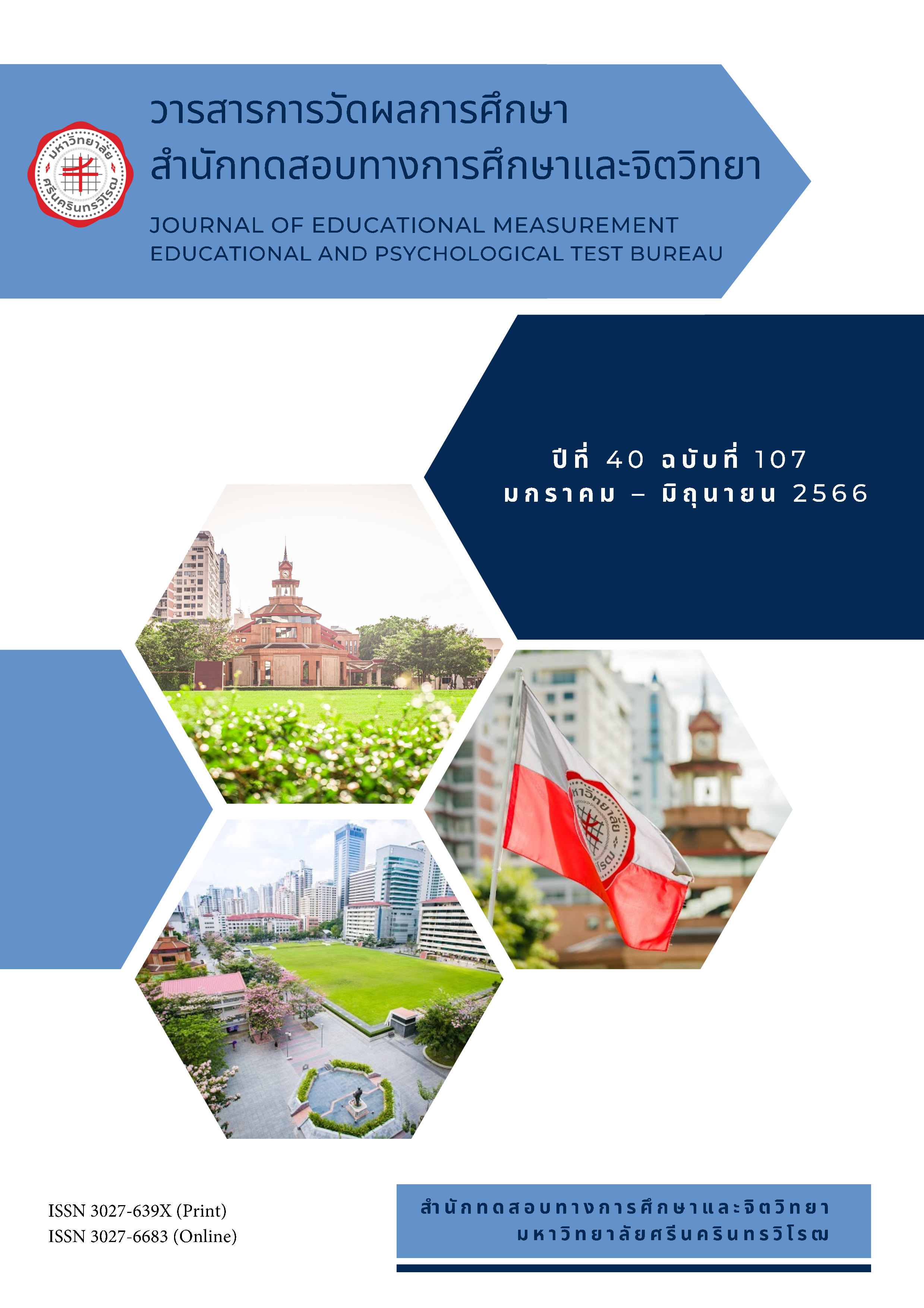The Effect of Teaching a Mathematical Modeling Course based on Student-Centered Approach to cultivate Mathematical Application Ability of Students Majoring in Mathematics in Zhoukou Normal University
คำสำคัญ:
Mathematical Modeling Course, Student-centered Approach, Mathematical Application Ability, Students’ satisfactionบทคัดย่อ
The objectives of this research were to: 1) Compare students’ Mathematical Application Ability before and after the implementation of mathematical modeling course based on student-centered approach. 2) Assess students’ satisfaction about Mathematical modeling course. The sample used in this study was 30 year 2 students in Zhoukou Normal University, Zhoukou City, Henan Province. They were selected by cluster random sampling. The research instruments were: 1) Six lesson plans of mathematical modeling course based on student-centered approach. 2) Mathematical Application Ability test paper. 3) Satisfaction questionnaire. The researcher used the Mathematical Application Ability test paper to conduct pre-test and post-test on the sample. Then the pre-test data and post-test data are analyzed. The content of data analysis includes: score mean, standard deviation, correlation between pre-test data and post test data, t-test of paired dependent sample. The statistics was used for data analysis were the mean, standard deviation, and t-test of a sample.
The results of the study were as follows:
1) The Mathematical Application Ability test paper data analysis about pre-test and post-test showed the mean score of post-test data was 2.87 higher than that of pre-test data. When the confidence level was .05, the correlation between pre-test data and post-test data was 0.75, and the t-test value Sig=0.000<.05 (The mean of pre-test was 11.50, the mean of post-test was 14.37). The above data showed that students' Mathematical Application Ability had been significantly improved.
2) The students' satisfaction was high level. The lowest mean score was 3.83 and the highest was 4.23, higher than 3.51.
เอกสารอ้างอิง
Chui, Christopher W.T. & Wolfe, Edward W. (2002). A Method for Analyzing Sparse Data Matrices in the Generaliz ability Theory Frame work. Applied Psychological Measurement, 26(3), 321-338.
Engelhard, George, Jr. (1992). The Measurement of Writing Ability with a Many-Facet Rasch Model. Applied Measurement in Education, 5(3), 171-191.
Grigg, S., Perera, H. N., McIlveen, P., & Svetleff, Z. (2018). Relations among math self-efficacy, interest, intentions, and achievement: A social cognitive perspective. Contemporary Educational Psychology, 53, 73-86.
Jiang Qiyuan. (2010). Mathematical Modeling. Higher Education Press.
Karaya.(2014). Inquiry Learning. Journal of Educational Measurement, 31(89), 27-32.
Kittisak Boonthong, Suphot Koedsuwan, Thongpan Boonkusol.(2020). Comparison of learning achievement and analytical thinking skills in mathematicts of mathayomsuksa III students receiving cooperative learning by using student teams achievement divisions and team games tournaments technique. Journal of Educational Measurement, 37(102), 43-58.
Lee J.Cronbach. (1951). Coefficient alpha and the internal structure of tests. Psychometrika, 16(3), 297-334.
Luo Zhikun. (2020). Reform and innovation of teaching methods of mathematical modeling course in universities. Survey of Education, (2), 57-58.
Mandala Tamabut.(2002). Use PBL (problem-based learning) to improve learning quality. Academic journals, 5(2), 11-17.
Nareerat Kwanrak (2015). Develop a set of mathematics teaching, focusing on cooperative learning with the Problem Solving Contest (TGT) Polynomial. M.1, Journal of Industrial Technology Ubang Rajatani Rajabhat, Bachelor, 5(1), 124-134.
Nikom Boonlai, Prakittiya Tuksino.(2019). Scoring essay test for validity and reliability: application of generalizability theory and many-facet rasch model. Journal of Educational Measurement, 36(99), 154-169.
Niramon Nunwong , Chuthaphon Masantiah , Siwaporn Poopan.(2021). An analysis of factors affecting mathematics learning attention of upper secondary school students. Journal of Educational Measurement, 39(105), 127-138.
Owen, P. (2007). Integrating katz and chard's project approach with multicultural education in the university classroom. Journal of Early Childhood Teacher Education, 28(3), 219-232.
Pattanapong Somkane (2015). Develop a set of mathematics teaching focused on the process of teamwork learning. (TGT) The promotion number of the first middle school student: University Journal of Industrial Technology Ubang Rajatani, 5(1), 113-123.
State Council of PRC. (2010). Outline of the National Medium and Long-term Plan for Education Reform and Development.
Thanyaluck Maneechod, Naritsara Raipimai, Sirinat Moonmuang. (2016). Assessment of teaching potential development program of english teachers that follows kirk patrick’s concept. Journal of Educational Measurement, 33(93), 20-29.
Wu Yuan. (2020). Discussion on teaching reform and curriculum ideological and political practice of mathematical modeling course in finance and economics colleges. Education Teaching Forum, (43), 206-208.
Xie Jinxing. (2015). Practical Mathematical Modeling. Higher Education Press.
Yang Lei. (2019). Teaching exploration of mathematical modeling course based on application ability training. Journal of Hubei Open Vocational College, (5), 138-140.
Yilmaz, K. (2008). Constructivism: Its theoretical underpinnings, variations, and implications for classroom instruction. Educational Horizons, 86(2), 161-172.
Yu Shuiqing. (2020). Teaching reform of mathematical modeling course in the era of big data. New West, (6), 170-171.



